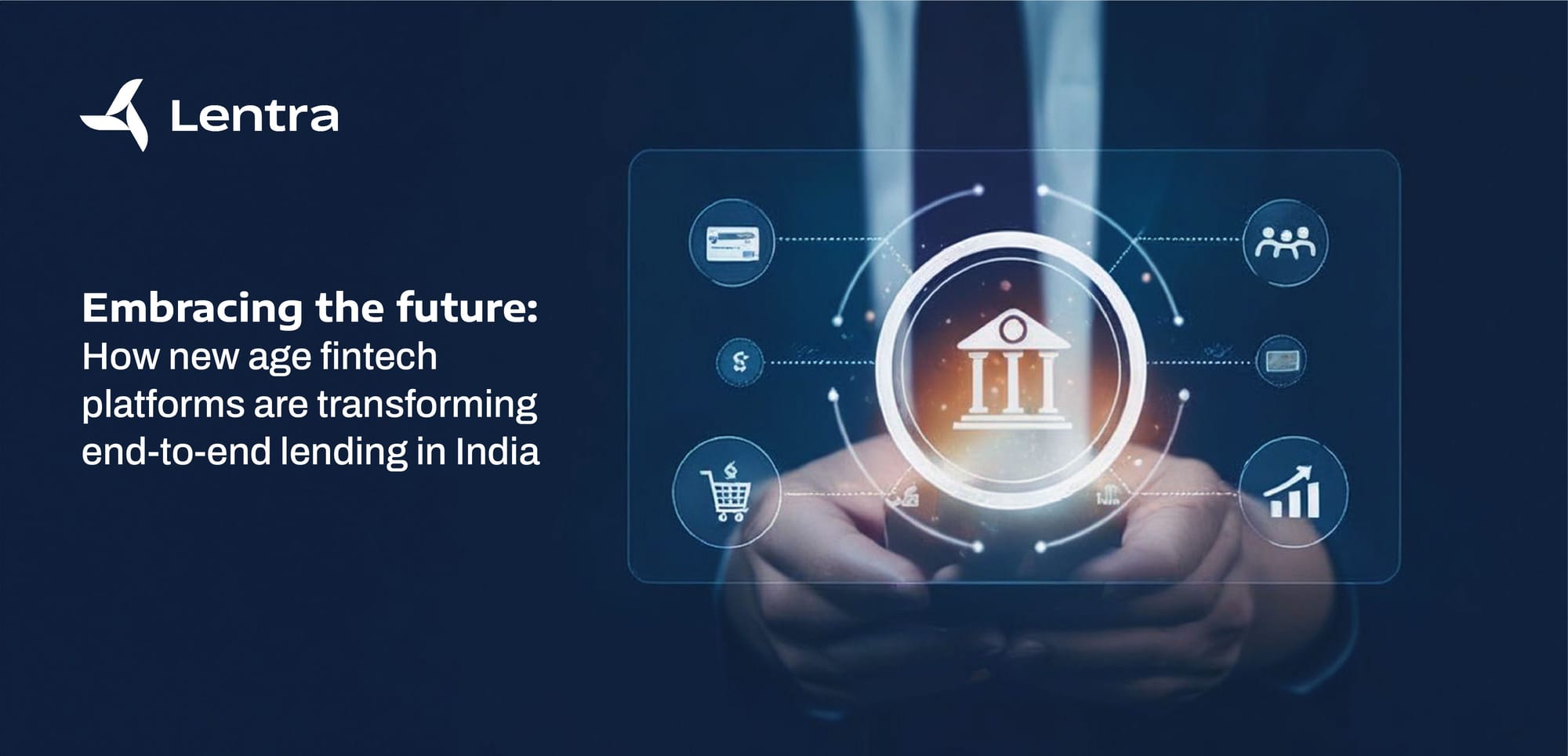Embracing the future: How new age fintech platforms are transforming end-to-end lending in India

The landscape of lending in India encompassing loan origination, management and collection, is undergoing a dramatic transformation in the wake of digitalisation. This evolution is not just enhancing the efficiency of disbursing loans but also improving the decision-making process.
The lending institutions are now moving away from traditional, labour-intensive loan approval processes and towards more agile, accurate, and customer-friendly practices.
By harnessing the power of advanced analytics, automation, and digital technologies, financial institutions are now able to offer faster, more personalised loan decisions, enhancing both customer satisfaction and operational efficiency.
Let's delve into the key trends shaping the future of lending in India and their role in improving verification, decision and communication.
STP and Alternative data sources for decision-making
In recent times, two significant trends are reshaping the future of lending: the push for maximal Straight Through Processing (STP) and the strategic use of alternative data sources for enhanced decision-making.
STP is a revolutionary approach that automates the entire lending journey from application to disbursement.
Traditionally, the lending process has been heavily reliant on manual interventions, with estimates suggesting that up to 70% of lending operations require human input at various stages. This often involves cumbersome steps such as manual application entry, document collection, and in-person verifications, leading to extended processing times and increased operational costs.
Lentra platforms have achieved more than 90% STP by embedding multiple microservices into a single entity. This enables seamless execution of loan processing without the need for manual handling.
The integration of Video Know Your Customer (vKYC) technology, which exemplifies how automation can streamline the initial stages of the lending process, is a perfect example of the technological advancement of Lentra products. Likewise, ID verification with Aadhar and OTP, Biometric Aadhar, PAN, VoterID, Driving License etc., have helped automating the identity verification and also help reduce fraud.
Lentra products utilise alternative data sources and their triangulation along with STP to enhance credit decision-making, manage risks, and detect fraud more effectively. For instance, inconsistencies in the application data, such as discrepancies in the addresses linked to a PAN number, employment location, and credit application, can now be detected through sophisticated data analysis. This ability to triangulate data from various sources enables lenders to identify potential fraud or inconsistencies early in the application process.
The confluence of data with automation helps lending institutions by not only flagging risks but also conducting deeper investigations into a customer’s background, thereby making the credit decision process more robust and informed.
Protection against frauds
The expansive digitisation gives rise to concerns around security and rise in fraud. Data collection through video records and verification has become more exposed to breaches with the advent of AI and generation of deep fake videos.
However, manipulating vKYC processes isn't as easy as it seems and Lentra has an impregnable system in place to combat safety breaches.
When you have a vKYC, our technology clearly identifies the real person behind the video by tracking the location from where the customer is taking the video call. It can also prompt the Bank agent to ask questions to reconfirm that the person behind the camera is not a robot, an impersonation. The questions asked are relevant to customers while being random in nature so that both the agent and the person going through vKYC are unaware of it. This introduces authenticity and accuracy.
Next when the video goes live and checks against your photographs from authorised entities like PAN, Aadhaar, etc are done, one can argue that it’s a pre-recorded video used by an imposter. To counter that, we verify the location, it’s called a ‘Liveness check’. For the liveness check, a person shares the address with the geocode which corresponds to a location without anybody’s intervention. It helps us identify if the video is actually running at the location where the person is supposed to be. Additionally, for the verification, we may ask the candidate to perform spontaneous tasks, like raising their hand or clapping twice, this can’t be predetermined on a recorded video. That helps authenticate the video and counter deception.
Focus on New To Credit (NTC) customers
The lending trend leans heavily towards automated processes, surpassing mere digitisation to prioritise seamless customer experiences via handheld devices. The aim is unified access to credit products and services through a single interface, eliminating the need for logging into multiple websites within the same institution. India leads in this shift, propelled by a burgeoning segment of new-to-credit customers (NTC).
With a substantial portion of the population in the age group of 18-30 and the economy flourishing, there is a growing demand for credit by individuals with limited credit history. In response to this challenge, alternate data sources have become crucial for assessing authenticity and credit behaviour. India's progress in this area has been accelerated by the introduction of various digital infrastructures, such as Account Aggregator, Aadhaar and PAN, as well as the widespread adoption of mobile devices and digital payments. These advancements have facilitated quick and convenient credit transactions, even for smaller amounts, and contributed to India's rapid progress in this domain.
At Lentra, we have products and strategies in place to target the New To Credit (NTC) customers, and we continue to focus on them. We categorise our strategies based on Existing to Bank (ETB), New To Bank (NTB), and Existing to Credit (ETC) segments.
Our focus spans across various sectors, including retail, SME, agriculture, and corporate. We cover a range of products for each segment, ensuring the bank's comfort in dealing with us. While retail includes consumer durables, credit cards, home loans, and vehicle loans, SMEs receive support for overdrafts, cash credits, term loans, and specialised agricultural loans.
Conclusion
With the evolving technology, the future of lending in India looks promising, offering a more accessible, transparent, and secure financial environment for both lenders and borrowers alike.
This evolution not only heralds a new era of financial inclusivity but also showcases the potential to revolutionise traditional industries for the betterment of the economy and society.
Lentra is setting a new benchmark for efficiency, security, and customer-centricity in the lending sector by prioritising seamless straight-through processing, utilising alternative data sources for decision-making, implementing robust fraud prevention mechanisms, and focusing on NTC customers.
For feedback and comments, reach out to us at [email protected]

